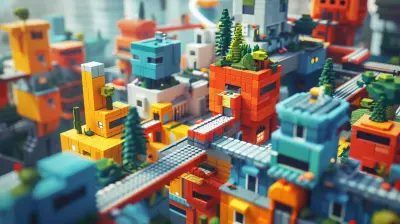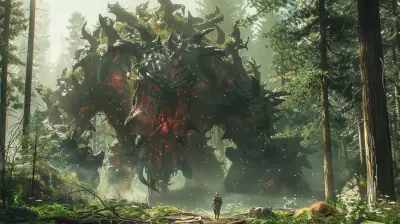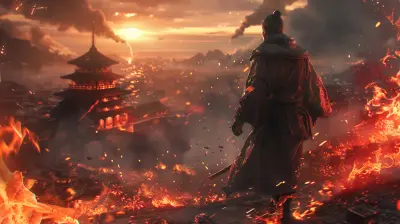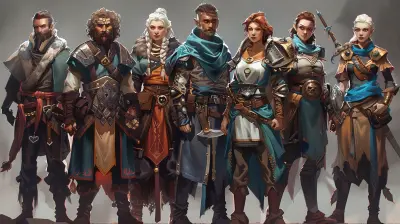Customizing Villains: Why Bad Guys Deserve the Best Looks
27 April 2025
When you think of a villain in your favorite game, what’s the first thing that comes to mind? Probably their menacing laugh, their evil plans, or maybe even their chilling one-liners. But let’s be real—what really sticks with us is how they look. A great villain isn’t just defined by their deeds; they’re also defined by their style. Whether it’s a sleek, intimidating costume, an unsettling choice of colors, or armor that could put a knight’s to shame, a villain’s visual design holds a tremendous amount of storytelling power.
So why do we, as gamers, care about how villains look? And more importantly, why should developers make their bad guys look like they just stepped off a runway (albeit an evil one)? Buckle up, because we’re diving into why customizing villains isn’t just an aesthetic choice––it’s essential. 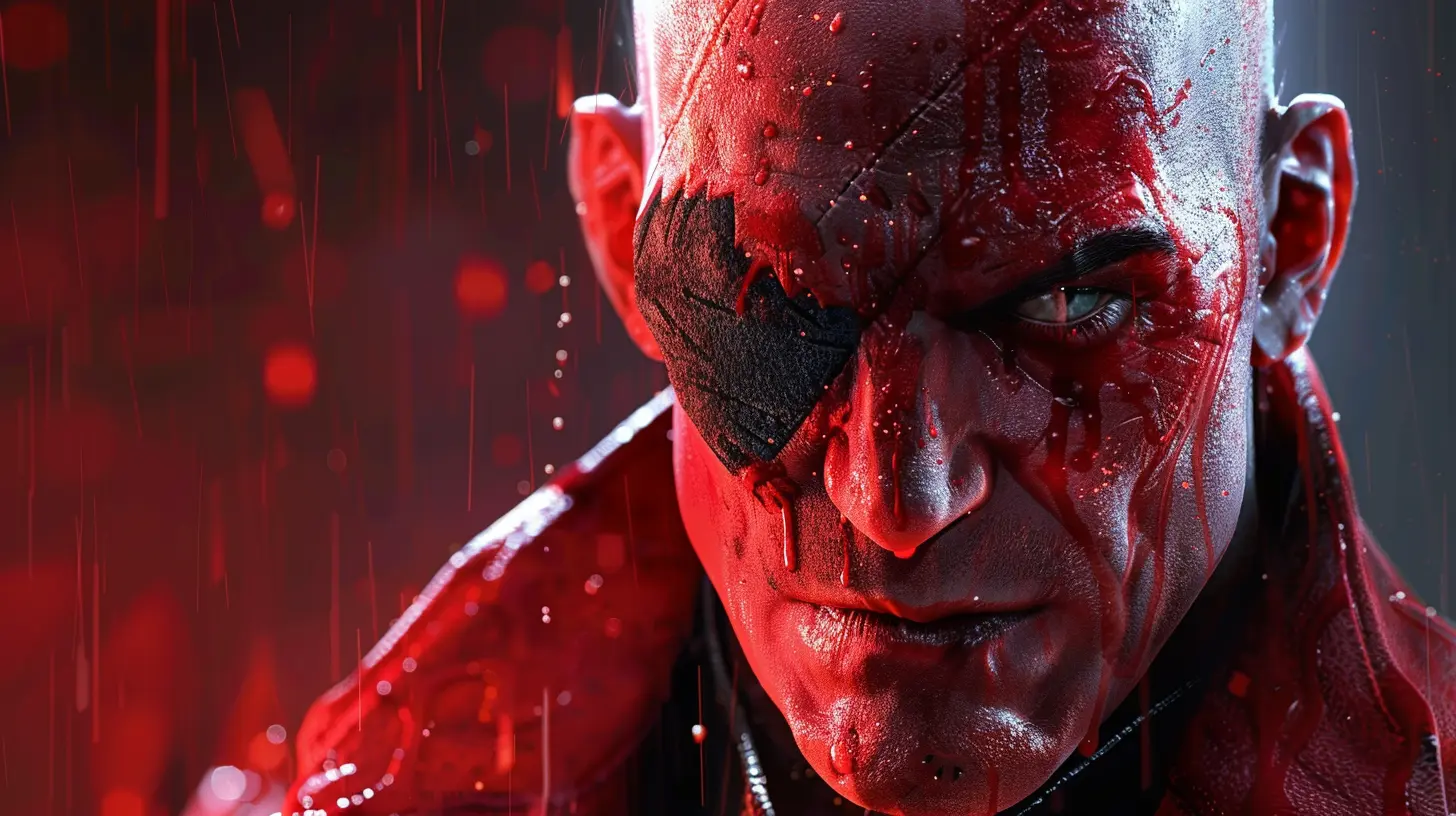
First Impressions Matter – Even for Villains
Let’s start with the obvious: first impressions. You know the saying "don’t judge a book by its cover"? Yeah, well, gamers don’t really live by that rule—especially when it comes to villains. The moment a big baddie shows up on screen, your brain is already assessing whether they’re a threat or a joke.Imagine this: You’re playing a horror game, and the final boss—who’s supposed to be the embodiment of terror—shows up wearing a beige turtleneck and khakis. Scared? Probably not. You’re more likely to wonder if they moonlight as an accountant. Now, picture that same villain with glowing red eyes, a ripped leather trench coat, and a scar cutting across their face. Suddenly, they don’t just look like someone who could crush your soul; they feel like it too.
The way a villain looks sets the tone for their character. It’s like the visual equivalent of a theme song. If designers don’t get it right, no amount of dramatic monologues or tragic backstories is going to save them. 
Style Reflects Substance: Designing Meaningful Visual Cues
Villain customization isn’t just about slapping a skull emblem on their chest and calling it a day. A villain’s design should tell a story. Every little detail, from the color palette to their weapon of choice, gives players insight into who they are and what they stand for.Take Sephiroth from Final Fantasy VII, for example. His long silver hair and flowing black coat aren’t just there to make him look cool (even though they absolutely do). Together, they create an ethereal, almost angelic aura—a stark contrast to his destructive plans. His appearance alone screams “I’m a big deal,” long before he even utters a word.
On the flip side, think about villains like Handsome Jack from Borderlands 2. His corporate look and self-satisfied smirk perfectly match his personality: a smarmy, egotistical jerk who’s somehow weirdly charming. Without even hearing him speak, you already know exactly the kind of guy you’re up against.
The best villains don’t just look cool—they look purposeful. Every piece of their design should connect to their motives, personality, and role in the story. 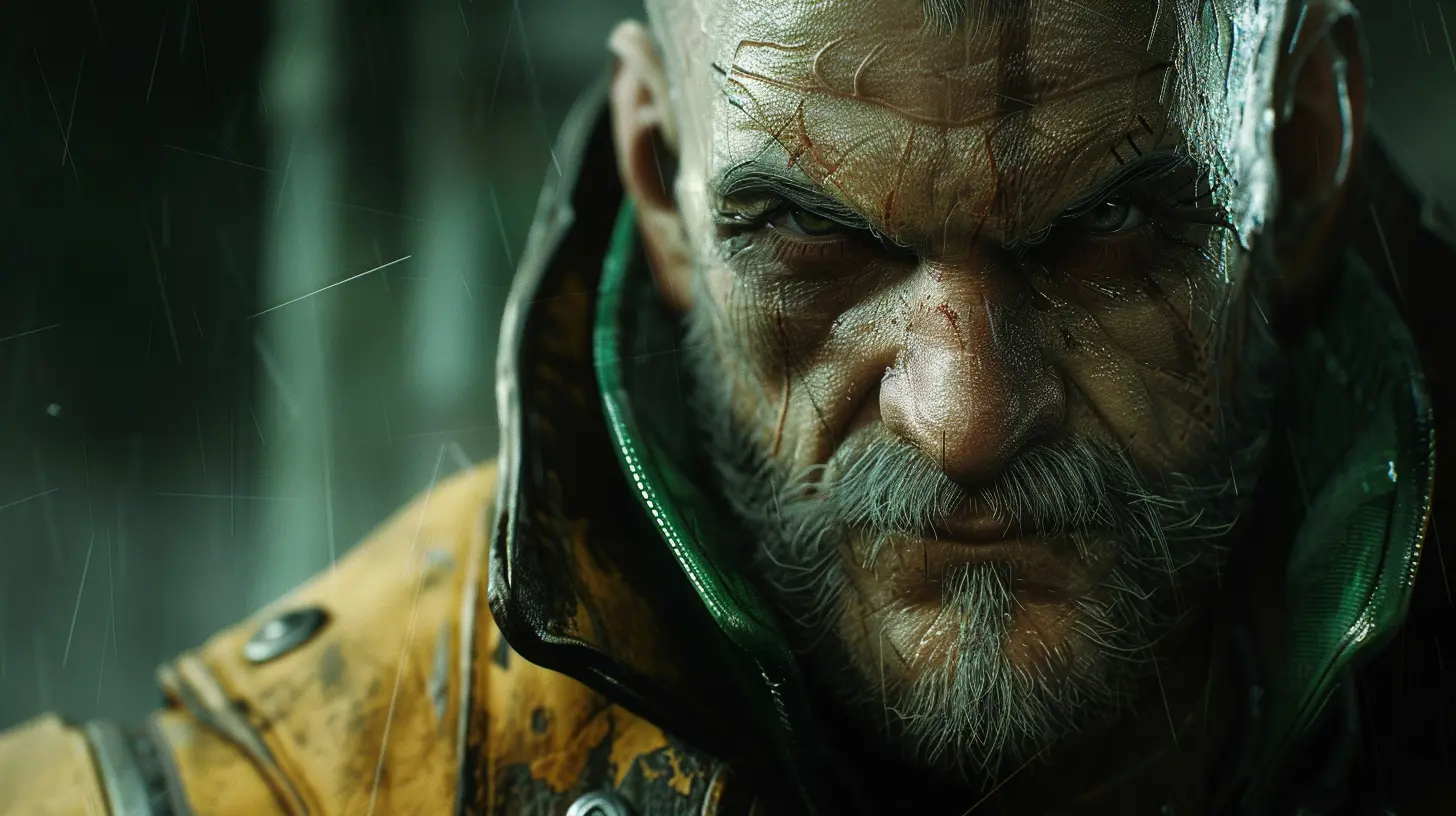
Psychology of Fear: The Science Behind a Villain’s Look
Believe it or not, there’s actual psychology behind why certain villain designs stick with us. Games rely on visual design to elicit specific emotional responses, and villains are no exception. Here’s a little science lesson:- Colors: Ever noticed how a lot of villains wear red, black, or purple? That’s because these colors evoke emotions like anger, fear, and mystery. Red screams danger, black represents power or death, and purple gives off a vibe of unnaturalness or intrigue.
- Shapes: Sharp and angular designs tend to make us feel uneasy, while soft, rounded shapes are more comforting. That jagged armor? Yeah, it’s not just for show—it’s a subconscious warning sign.
- Symmetry (or Lack of It): Perfect symmetry can make a villain seem cold and unfeeling (think Darth Vader), while asymmetry can create an unsettling, unpredictable vibe (Two-Face, anyone?).
Game developers use these visual tricks to make sure villains leave a lasting impression—even after you’ve defeated them. 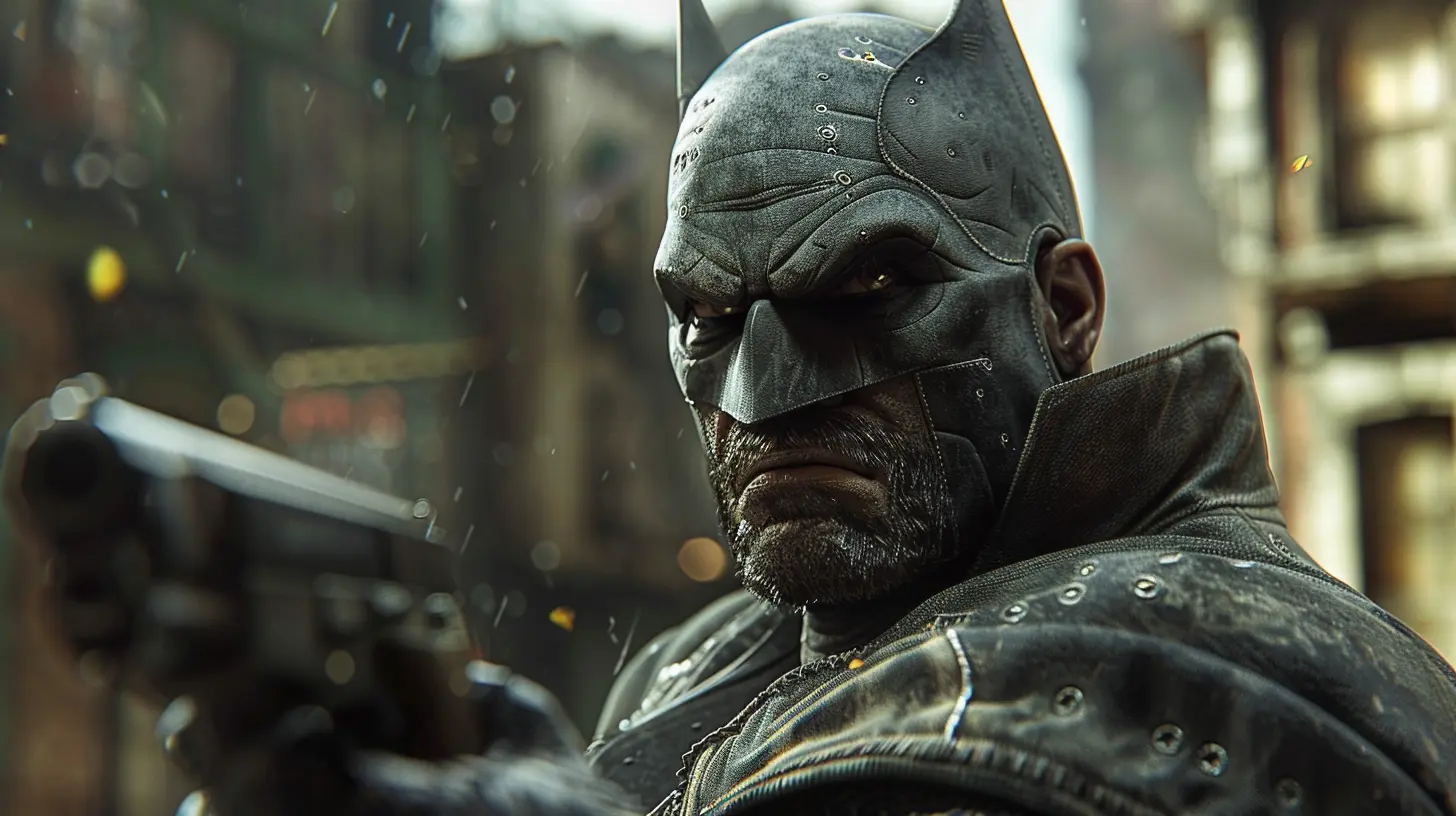
Customization and Player Engagement: Let Us Dress Up the Bad Guys
Now here’s where things get fun. What if you, the player, had a say in how the villain looks? In recent years, more and more games have embraced customization—not just for heroes, but for villains too.Take Saints Row IV. The game lets you completely design your main character, but it also gives you the option to customize your enemy gang leaders. It’s a small feature, but it makes the game so much more personal. After all, there’s something deeply satisfying about creating a villain that you want to take down.
Or consider games like The Sims. Sure, it’s not a traditional RPG, but the ability to create diabolical characters with the most ridiculous outfits is half the fun. Customization allows players to project their own ideas of what a villain should be, making the experience more immersive and unique.
Giving players control over a villain’s design is like handing them a paintbrush and saying, “Go ahead, make your nightmares.” And honestly, who wouldn’t want to?
Fashion is Power: Why Villains Get the Best Wardrobes
Let’s face it—villains almost always outdress the heroes. Think about it. When was the last time a protagonist’s outfit made you go, “Wow, I need that in my closet”? Exactly. Meanwhile, villains are out here serving looks like they just stepped off the cover of Vogue: Evil Edition.Why do villains always get the better outfits? Part of it is practicality. Heroes need to look approachable and relatable, so their outfits tend to be simpler. Villains, on the other hand, need to stand out. Their job is to intimidate, seduce, or disgust you. They’re meant to dominate every scene they’re in, and their wardrobes are part of that domination.
A villain’s outfit is their armor, both literally and metaphorically. It’s not just about looking good; it’s about commanding attention. Whether it’s a flowing cape, a gleaming mask, or a pair of boots that scream “I mean business,” a well-dressed villain is unforgettable.
Iconic Villains, Iconic Looks
Let’s take a moment to appreciate some of the greatest villain designs in gaming history. These baddies don’t just exist; they leave a legacy.1. GLaDOS (Portal): A sleek, minimalist design that perfectly complements her cold, sarcastic personality. She’s proof that even an AI can slay the style game.
2. Ganondorf (Legend of Zelda): Regal yet menacing, Ganondorf’s outfits scream “dark king” in the best possible way.
3. The Illusive Man (Mass Effect): Sometimes, less is more. His crisp suit and glowing eyes make him as intriguing as he is dangerous.
4. Lady Dimitrescu (Resident Evil: Village): A towering vampire in a glamorous hat? Say no more. She’s as stylish as she is terrifying.
These villains aren’t just memorable because of their actions—they’re memorable because of their looks.
What Does This Mean for Game Designers?
For developers, customizing villains is no longer optional—it’s essential. In a world where gamers expect high-quality visuals and storytelling, a poorly designed villain can break immersion faster than bad voice acting.Designing a villain isn’t just about slapping together some intimidating features and calling it a day. It’s about understanding the psychology of fear, the importance of color theory, and the narrative weight that visuals carry. A great villain doesn’t just walk into a room; they own it. They demand your attention. They make you remember them.
Final Thoughts: The Devil’s in the Details
At the end of the day, villains need to look as compelling as the roles they play. Whether they’re clad in battle-worn armor, draped in opulent silks, or rocking some futuristic tech gear, their appearance matters more than we might realize. A well-designed villain doesn’t just enhance a game—they elevate it.So next time you’re squaring off against the final boss, take a moment to appreciate their outfit. Because behind all those spikes, capes, and glowing eyes is a team of designers who worked tirelessly to make sure your enemy looked as memorable as they are menacing.
all images in this post were generated using AI tools
Category:
Character CustomizationAuthor:

Pascal Jennings
Discussion
rate this article
4 comments
Xander Pacheco
Who says villains can’t have a flair for fashion? From capes that swoosh dramatically to sinister yet stylish footwear, customizing bad guys is essential! After all, when you’re plotting world domination, you might as well do it in haute couture. Villainy has never looked so good!
May 16, 2025 at 3:32 AM

Pascal Jennings
Absolutely! Fashion adds depth to villains, making their schemes even more captivating. After all, style is power!
Gunnar Stewart
This article brilliantly highlights the importance of villain aesthetics in gaming. A well-designed antagonist not only captivates players but also enriches the narrative. Customization allows for deeper connections, making their motives and presence truly unforgettable. Great insights!
May 8, 2025 at 4:55 AM

Pascal Jennings
Thank you for your thoughtful insights! I’m glad you enjoyed the article and found the discussion on villain aesthetics compelling.
Zayla McElroy
Great read! Embracing villain aesthetics not only adds depth to characters but also enriches storytelling. When bad guys look their best, they captivate and inspire fear in the most delightful way!
May 7, 2025 at 4:03 PM

Pascal Jennings
Thank you! I'm glad you enjoyed it. Embracing villain aesthetics truly enhances character depth and makes storytelling more engaging!
Eden McClain
Absolutely! Great villains deserve unique styles and depth!
May 6, 2025 at 4:48 PM

Pascal Jennings
Thank you! I completely agree—well-crafted villains can elevate a story with their distinctive style and complexity.
